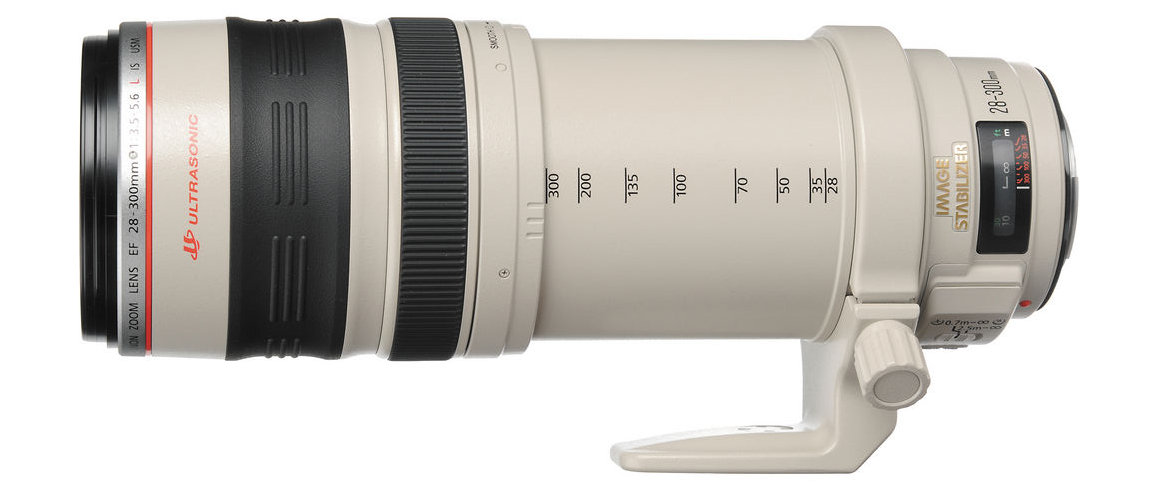Digital Camera World Verdict
So-called ‘superzoom’ lenses are generally very travel-friendly options, with a compact and lightweight build that makes them ideal for anything and everything from city walkabouts and countryside treks, to jetting around the world. This Canon has a fairly typical zoom range for a full-frame compatible superzoom, but the focus is on rock-solid build quality and performance, with no concession to trimming the size and weight. It’s a lot pricier to buy as well.
Pros
- +
Supersized zoom range
- +
Solid build and performance
- +
Tripod mounting ring included
Cons
- -
Comparatively big and heavy
- -
Expensive to buy
Why you can trust Digital Camera World
The Canon EF 28-300mm f/3.5-5.6L IS USM is the company’s only Canon superzoom lens for full-frame rather than APS-C format DSLRs, and it’s a real heavyweight. Indeed, it’s about three times heavier than superzoom lenses, at 1,670g. As such, it looks and feels much more like a chunky telephoto lens and comes complete with Canon’s trademark off-white paint job and a tripod mounting ring. Launched back in 2004, it also matches the first edition of Canon’s EF 100-400mm IS USM lens in having a trombone-style push-pull zoom mechanism, rather than a more usual twist-action zoom ring, and comes complete with an adjustable friction damper.
Specifications
Mount: Canon EF
Full frame: Yes
Autofocus: Yes
Image stabilization: Yes
Lens construction: 23 elements in 16 groups
Angle of view: 75-8.25 degrees
Diaphragm blades: 8
Minimum aperture: f/22-38
Minimum focusing distance: 0.7m
Maximum magnification ratio: 0.3x
Filter size: 77mm
Dimensions: 92x184mm
Weight: 1,670g
Key features
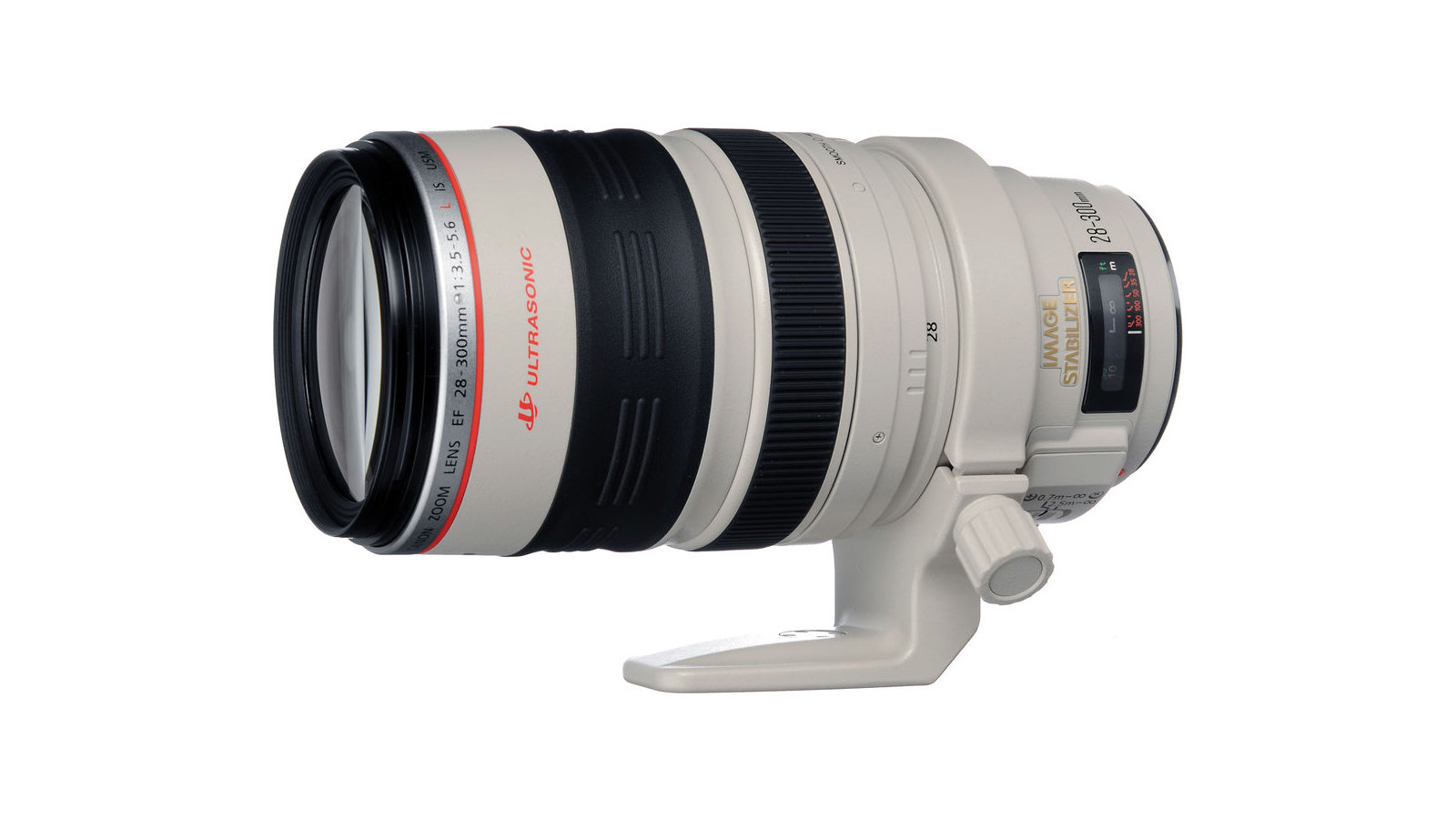
With a design ethos that clearly concentrates on quality rather than compactness, this lens has the usual L-series trappings. It’s robust, with a weather-sealed, pro-grade build quality and a high-end optical layout to match. This features two aspherical elements and three UD elements. Switches are on hand for AF/MF focusing, an autofocus range limiter than can lock out the short end between 0.7m and 2.5m, and dual panning modes for static and panning shots. Ring-type ultrasonic autofocus comes with the usual full-time manual override and a focus distance scale beneath a viewing window.
Performance
As you’d expect from one of Canon’s L-series lenses, performance is impressive. Autofocus is fast and whisper-quiet, although the relatively old-generation image stabilizer only has 3-stop effectiveness. Image quality is pretty good overall, but it’s best to stop down a little for decent corner-sharpness and to reduce vignetting at the short end of the zoom range.
Lab results
We run a range of lab tests under controlled conditions, using the Imatest Master testing suite. Photos of test charts are taken across the range of apertures and zooms (where available), then analyzed for sharpness, distortion and chromatic aberrations.
We use Imatest SFR (spatial frequency response) charts and analysis software to plot lens resolution at the center of the image frame, corners and mid-point distances, across the range of aperture settings and, with zoom lenses, at four different focal lengths. The tests also measure distortion and color fringing (chromatic aberration).
Sharpness:

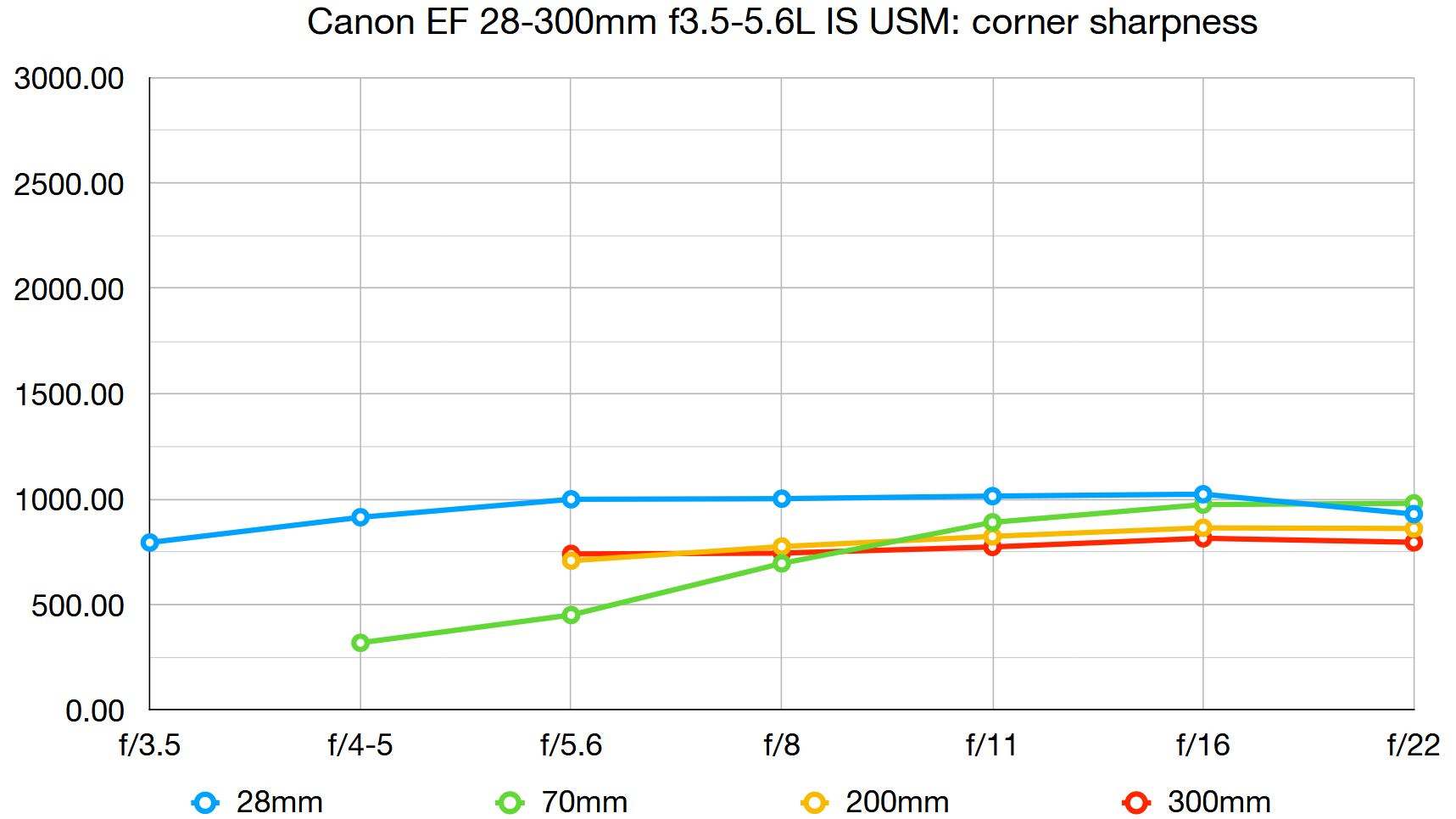
Centre-sharpness is pretty good for a superzoom lens but edge-sharpness is comparatively disappointing. Across the whole frame, sharpness is completely outclassed by Canon’s much newer RF 24-240mm superzoom for EOS R-series mirrorless cameras.
Fringing:
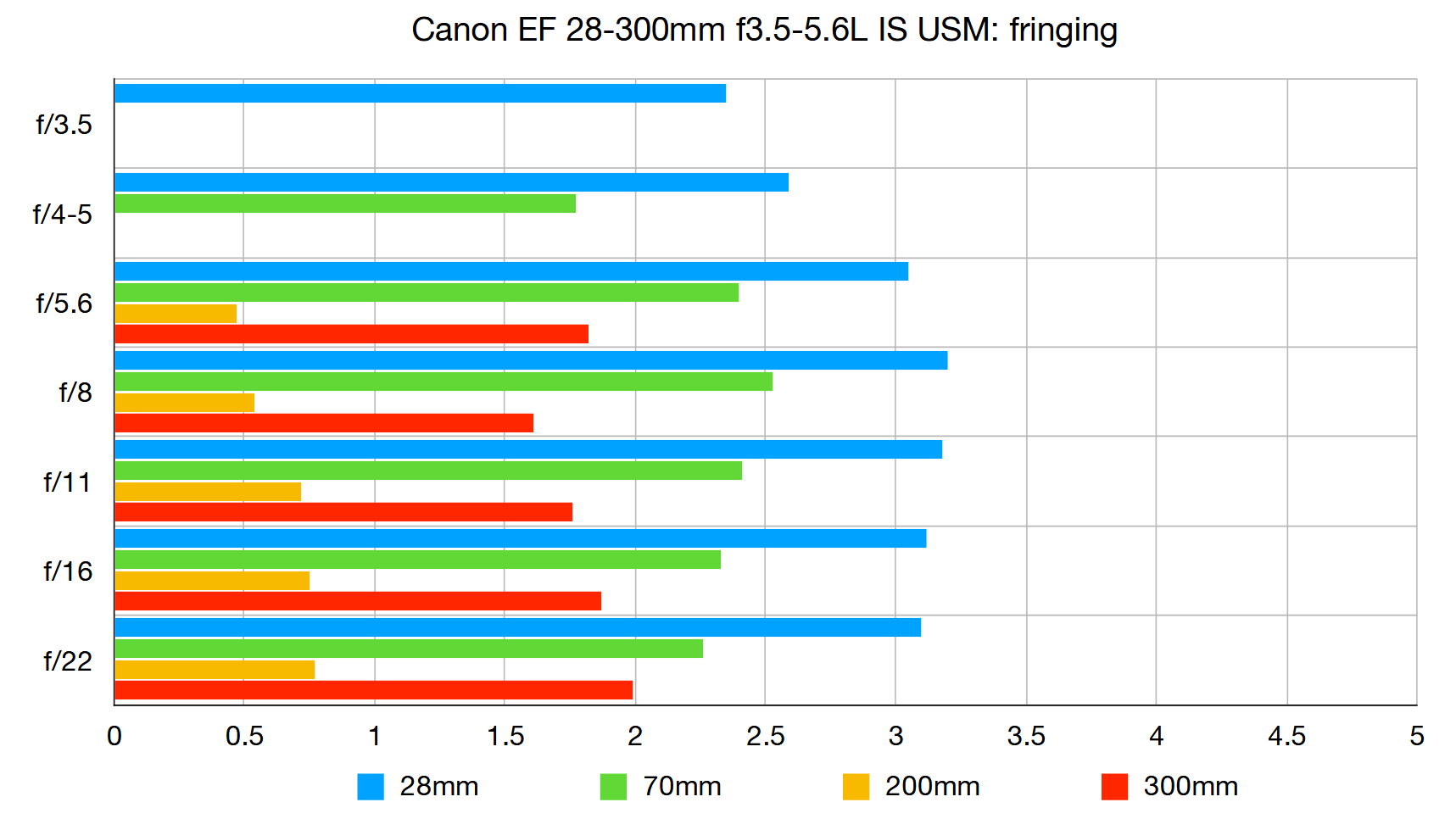
Color fringing can be clearly noticeable towards the edges and corners of the frame at short to medium zoom settings, when uncorrected, but it less of an issue at the long end of the zoom range.
Distortion:
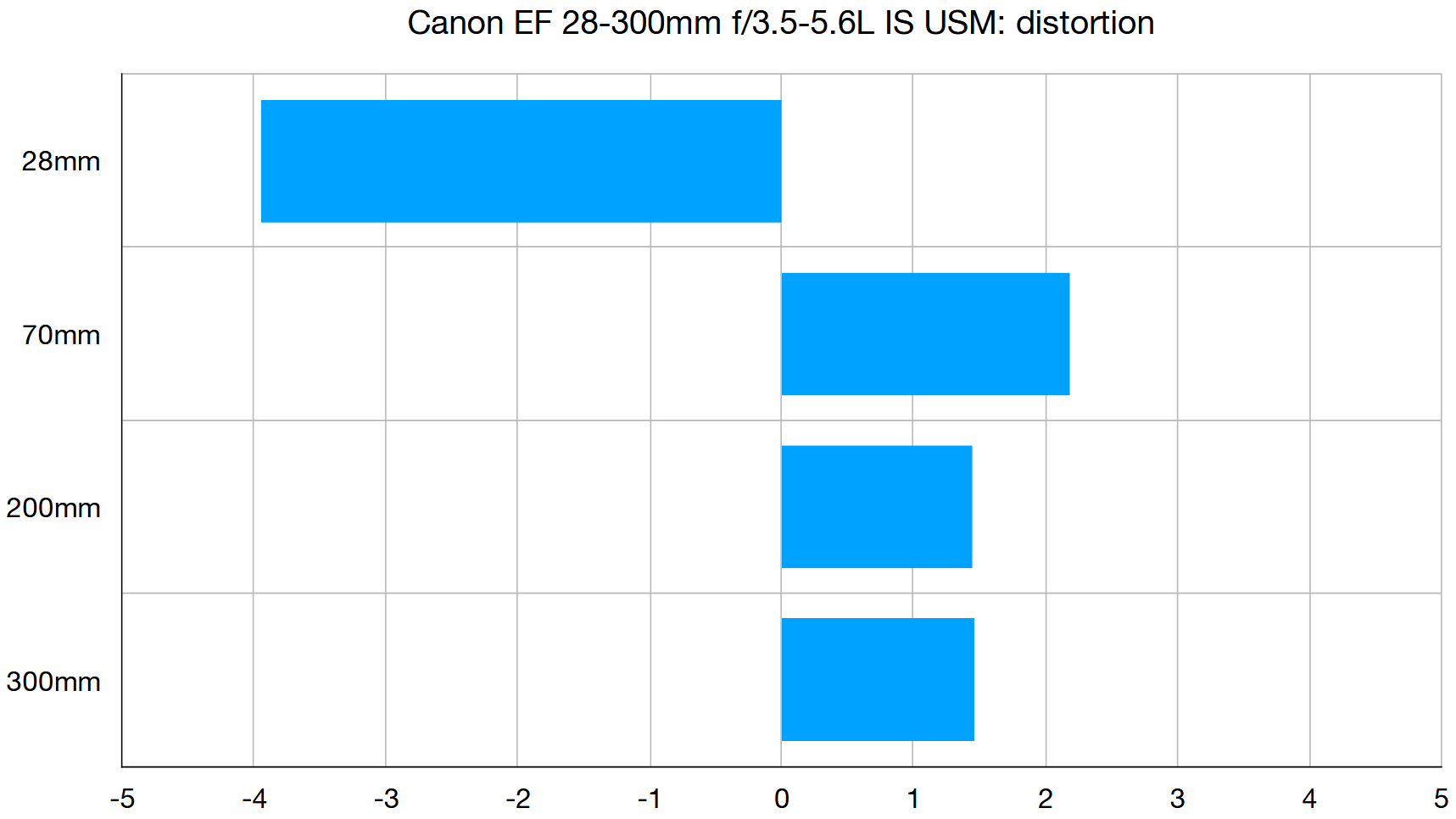
Barrel distortion is pretty heavy at 24mm, switching to less noticeable pincushion distortion at medium to long zoom settings.
Verdict
All in all, the Canon EF 28-300mm is an expensive beast of a lens that’s useful when you need to avoid swapping optics on your camera body. It can therefore come in handy for event photography and if you need to react quickly when shooting certain kinds of wildlife and sports. Unlike most superzooms, however, it’s certainly not a travel-friendly option and is comparatively expensive to buy.
Read more:
Matthew Richards is a photographer and journalist who has spent years using and reviewing all manner of photo gear. He is Digital Camera World's principal lens reviewer – and has tested more primes and zooms than most people have had hot dinners!
His expertise with equipment doesn’t end there, though. He is also an encyclopedia when it comes to all manner of cameras, camera holsters and bags, flashguns, tripods and heads, printers, papers and inks, and just about anything imaging-related.
In an earlier life he was a broadcast engineer at the BBC, as well as a former editor of PC Guide.
